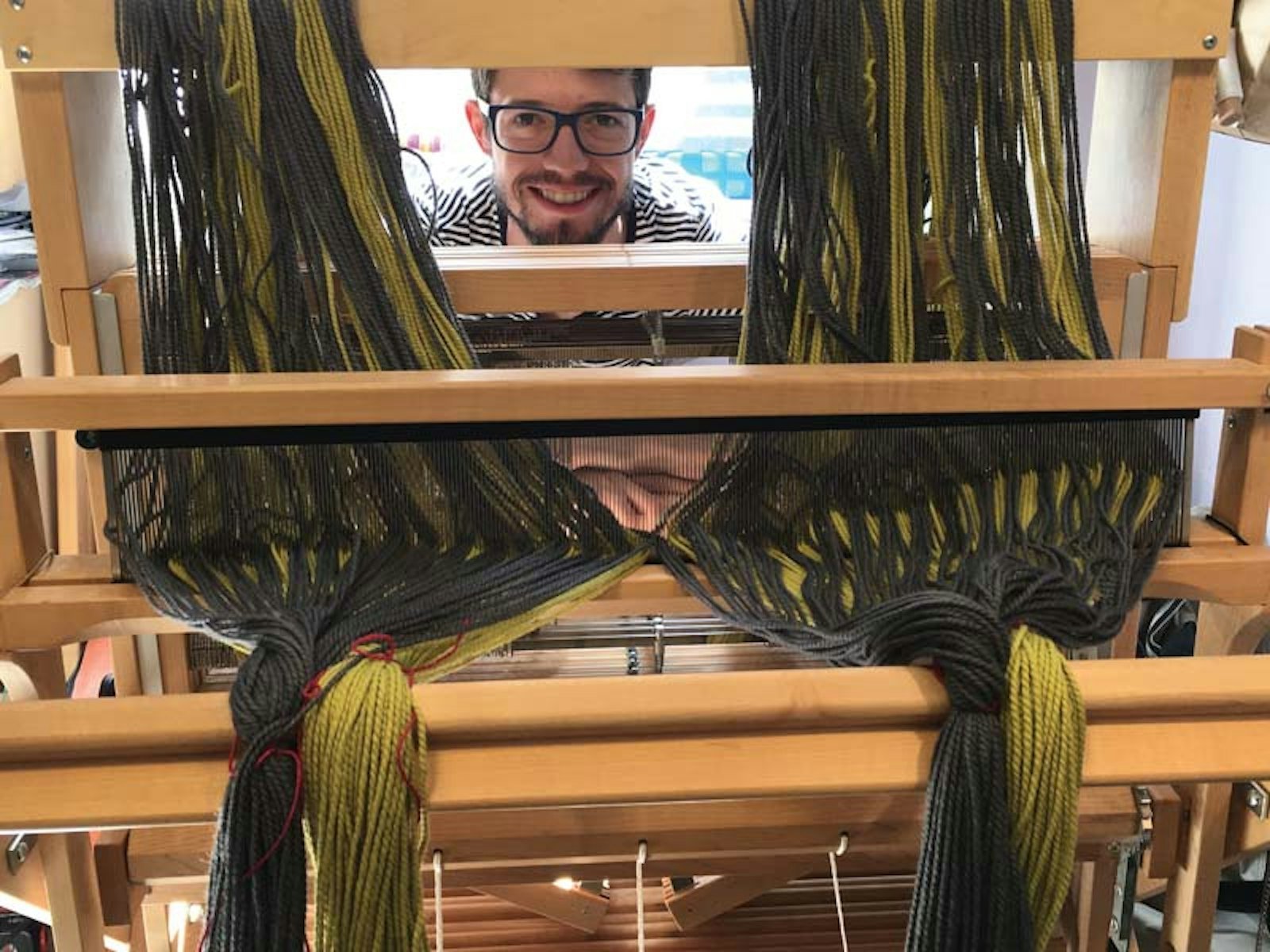If you ask me how I got started weaving, I have two answers: a simple one based on how I “officially” started, and one that covers the deeper question of why I started. I “officially” began weaving when I got the job as shipping assistant at Schacht Spindle Company, and I was offered the opportunity to learn. I took home a Cricket rigid-heddle loom in the box, had the pleasure of building something with my own two hands, and then proceeded to warp up three scarves the following weekend. A class and many books and DVDs later, I was hooked. This coupled with an extremely supportive work environment kept me going.
The second how is really the why.
I grew up in an artistic family, all of us having our passions and special mediums that we excelled at. I started with a love of photography, I became proficient in origami, and I was practically born with a paintbrush in hand, but in high school, I asked my sister to teach me how to knit. That’s where I found my medium. I picked up knitting and loved it. A couple of years later, while in college, I taught myself how to crochet to combat test anxiety. That’s when I became fascinated by fiber and design in a much deeper sense. I built my first “loom” in college: a 2-liter plastic bottle that I cut up and cut slits into to hold my warp (though I didn’t know that term at the time), and when that didn’t prove rigid enough, I took a piece of cardboard and wound yarn around it and made needle-woven bracelets.
All of these crafts have something in common: start with a piece of paper, a blank canvas, a limp length of yarn or string and make something out of it. Transform it. A magical evolution of raw materials into a piece of art.
LEFT: A broken twill that Ben sewed into a vest and cap. RIGHT A rag "tapestry" in process. Photos by Benjamin Krudwig.
Now I am not a “traditional” fiber artist, and when I go to industry shows, I immediately feel that difference. I am a twenty-something male. But I ask the question, “Traditional when?” Years ago, fiber prep and processing was family work, and all members of the household had their roles and duties, including young men. I think back to my seven-times great-grandfather and his father who sailed from Ireland to Scotland, then to Maryland, with their looms. He was only 15 years old when he sailed to America, but he was a weaver nonetheless.
As a millennial, as a man, I don’t think I have different motives for getting into weaving than people of any other age or gender. I just happen to be a rare sight nowadays. We are all drawn to the craft for different reasons, all of them valid. I was drawn partially to having control of the process from start to finish, but in the end, it’s all about the interlacements of threads. I love seeing how colors pop and fade, based on a weave structure. I love delving into the hows and whys of weave structures and figuring out their inner workings. There is also a metaphorical reason why I love weaving. It is one of the greatest metaphors for life. We create this beautiful and unique piece of art called life, seemingly out of nothing—weaving relationships, experiences, and stories into a fabric that when viewed as a whole, becomes something. We are stronger together than we are apart, and each of us is an integral part of this world, this community, and this life. Each thread gives character to the entire fabric.
—Benjamin Krudwig
See Ben's article in Handwoven January/February 2017!


